How the AMC Eagle blazed a trail through a giant government loophole
On a rainy day in 2015, I had the chance to test drive an AMC Eagle up the side of a small mountain in Pennsylvania. I’m not a skilled off-roader, but the car conquered the washed-out gravel roads and muddy two-tracks with ease. Not once did this 30 year-old station wagon get stuck or even spin its wheels.
When new, the Eagle was an interesting mix of an outdated body and an old engine coupled to a groundbreaking four-wheel-drive system. AMC fans love bragging that the Eagle was the first four-wheel-drive car and the first crossover SUV. In response, I can’t help thinking of an often misquoted but apt meme:

The Subaru Leone offered four-wheel-drive in 1972, the Jensen FF had it in 1966, and the GAZ M-72 had it way back in 1955. At best, the 1980 Eagle could be called the first American four-wheel-drive car. But if we accept that as true, how could the AMC also be the first crossover SUV? A car and a crossover are not the same.
Now, I don’t mean to start a big debate, but I consider a crossover to be a vehicle built on a car platform but with styling that mimics traditional truck-based SUVs. A crossover is not just a lifted car with all-wheel drive. By that metric, the Audi Allroad and Volvo Cross Country aren’t crossovers, because they share body panels with their wagon siblings, but the Audi Q5 and Volvo XC60 are crossovers.
The Eagle’s body panels were virtually identical to those of the AMC Concord, and it came in sedan, wagon, and hatchback forms. The AMC may be lifted, with four-wheel drive and a bunch of plastic cladding, but it still shares its body and interior with a line of passenger cars. I have long thought of the Eagle as a four-wheel-drive car, not a crossover.
That is, until I discovered the Eagle’s original 1977 product proposal.
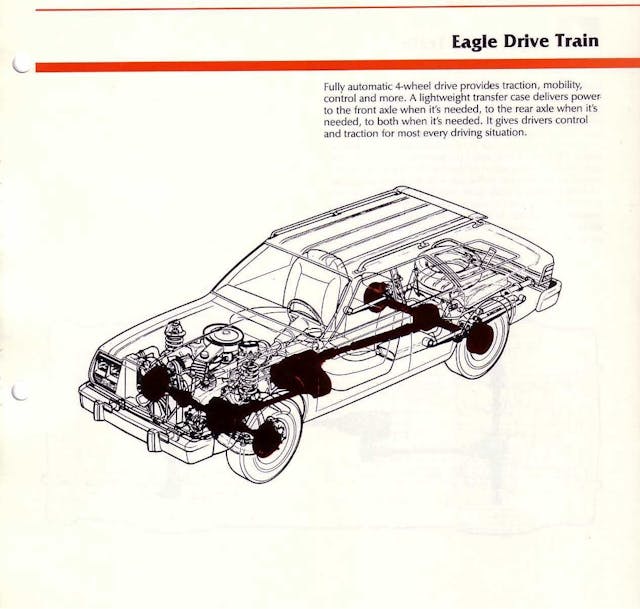
After American Motors acquired Jeep from the Kaiser Corporation in 1970, it hired Roy Lunn to run Jeep engineering. A British expat who had worked on the Ferrari-beating Ford GT40, Lunn was tasked with updating Jeep’s outdated products, but he also looked into the feasibility of a four-wheel-drive passenger car. In 1972, he cobbled together an AMC Hornet with a Jeep Quadra-Trac drive system. The combination worked, but the Jeep system produced unacceptable levels of noise and vibration, exacerbated by the car’s unibody construction. With plenty of demand for existing AMCs and Jeeps, American Motors shelved the project.
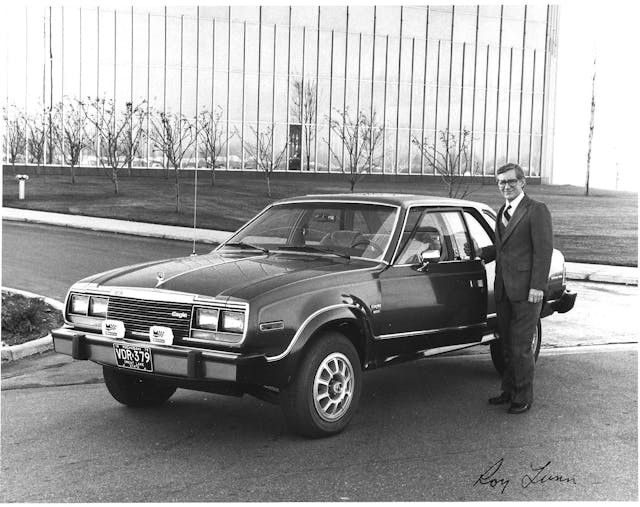
In 1976, Lunn learned about a viscous-coupling transfer drive developed by FF Developments and GKN and said to offer a quieter and smoother form of four-wheel drive. The Quadra-Trac system transferred power through a limited-slip center differential with a metal-on-metal connection. The FF-GKN viscous arrangement used a coupling that featured a series of discs spinning in a silicone-based fluid. Lunn hoped the technology would solve the four-wheel-drive Hornet’s issues with noise, harshness, and vibration.
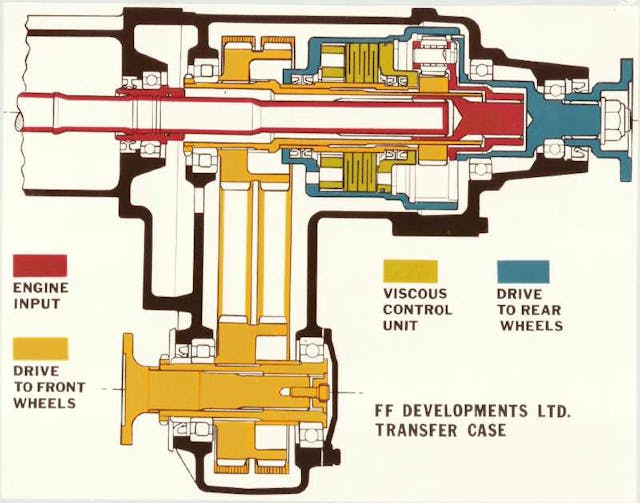
Lunn quietly asked management for a million dollars to restart the project and build another prototype. The inquiry was a direct violation of company policy—American Motors believed new vehicle ideas were the job of product planners, not engineers. Lunn managed to get the money without getting fired, however, and immediately got to work with FF, GKN, and New Process Gear, the viscous technology’s American rights-holder. By June of 1977, FF had built a prototype four-wheel-drive Hornet in England and shipped it to the States. In July, Lunn presented his reworked idea to AMC’s board of directors.
Although he was an engineer, Lunn had noticed an increasing disconnect between the way Jeeps were marketed and the customers who actually bought them. Writing years later in a technical paper for the Society of Automotive Engineers, he said:
“It was evident that many consumers coming from the 2WD segments were buying the vehicles (Jeeps) for the security they offered for on-highway driving, although the only vehicles available were accented to off-road usage. This out-of-context purchase, particularly in high volumes, raises the question of whether there was a need for a new type of vehicle with a different balance of compromise accented to highway usage.”
In other words, “The commercials show people driving up mountains, but in real life, they only go to the grocery.”
In today’s world, as we drive around surrounded by mall-crawling SUVs, that conclusion seems obvious. But in the mid-1970s, automakers were slow to realize the trend. Then as now, most Jeep buyers weren’t hardcore off-roaders; they wanted extra traction “just in case” of rain, snow, or slush. Four-wheel-drive cars were rare. A Jeep Wagoneer or Cherokee might be overkill, but it was still more practical for a family than a pickup truck.

By 1977, AMC’s passenger-car sales and fortunes were sinking fast. Lunn’s product proposal, titled “8001 Plus Four,” was remarkably clear-eyed:
“American Motors has functioned most-profitably in situations where its products were unique in the marketplace. The current passenger-car decline is unquestionably partially due to a demand for larger vehicles; but our disproportionately low share of the small-car market is highly influenced by increasingly superior imports and domestic competition.
The ongoing product situation, particularly relating to emissions and fuel economy legislation, is also necessitating complete redesign of basic vehicles to meet a new market created by standards rather than customer demand or desire. AMC is not financially or creatively capable of being able to meet this changing situation in the main segments of the market. We have, therefore, to accept progressive annihilation or get back to where we started by finding unique slots in the marketplace which are legal on a continuing basis and are within our financial and creative capabilities. This product proposal relates to creating such a unique product as a natural combination of Jeep and Passenger Car factors.”
None of the above was earth-shattering; AMC was getting squeezed by imports in the compact market and by the Big Three in the full-size market. The company desperately needed a fresh product in a niche with less competition. As Lunn said, a four-wheel-drive car was “a natural combination,” and basing that vehicle off an existing design or designs would save AMC millions.
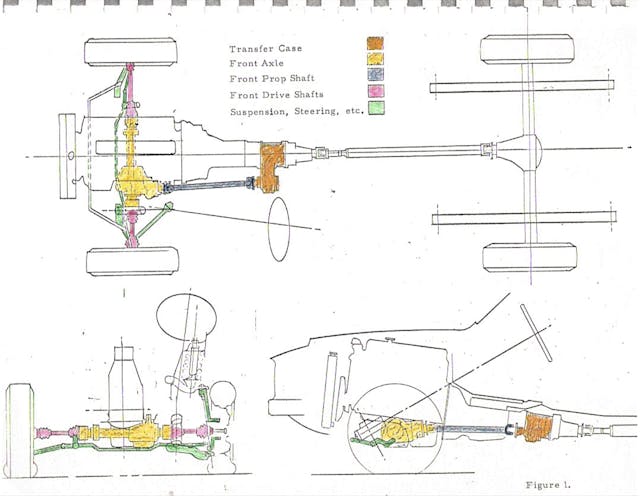
Here’s where it gets interesting: Lunn argued that AMC lacked the resources to meet upcoming government standards. Corporate Average Fuel Economy (CAFE) rules were set to go into effect in 1978 and grow more strict every year after. Emissions and safety standards were increasing, too. But Lund had devised a clever way around that:
“A most important aspect of the proposal is the legal categorizing to meet safety, fuel economy, and emission standards. The specification content and package layout are designed such that the vehicle would be categorized as follows:
- Safety—multi-purpose
- Fuel Economy—non-passenger cars (starts in 1979 at 17.2 mpg)
- Emissions—Light truck
These categories have obvious and distinct advantages over passenger-car requirements. This will enable us to pursue a course of action which will require less change to our basic powertrains and maybe a lower level of [emissions] control equipment.”
Roy Lunn said it first: The Eagle is not a car! And it was the first vehicle to exploit the “SUV loophole.”
Hagerty video host Jason Cammisa has a detailed and entertaining description of that term, but the loophole is essentially an unintended consequence of various American automobile regulations passed in the 1960s and 1970s. The majority of Americans at the time drove “passenger cars” (sedans, station wagons, coupes, hatchbacks, etc.), so the government made fuel economy, emissions, and safety regulations for these vehicles considerably stricter than those for “light trucks” (pickups, SUVs, off-road vehicles).
Those regulations were partly the result of corporate lobbying and partly just well-intentioned policymaking. Their goal was to cut trucks a bit of slack in fuel use, because those vehicles made up a smaller part of the market and needed more powerful engines for towing and hauling. Regardless, as with all well-intentioned rules, people found a way to skirt them.
By meeting the class specifications of a light truck, a vehicle would have more lenient engineering requirements and lower development costs. As a result, trucks and SUVs would become more profitable to build, so automakers spent more money designing and marketing them.
Those regulations unintentionally created a self-reinforcing feedback loop that helped truck and SUV sales skyrocket. The trend continues today and has contributed to all kinds of issues, from increased pedestrian deaths to increased air pollution. This isn’t the place for a political discussion, but no matter how you slice it, it’s funny that the United States government puts a Subaru Crosstrek in the same category as a Ram 1500, when it’s really just a lifted Subaru Impreza hatchback.
Those rules made sense back when SUVs were actually based on truck chassis—and when they were primarily used for towing, hauling, and off-roading. But now, and even more so than in Roy Lunn’s time, the majority of SUV drivers never even scratch the surface of their vehicle’s ability. Instead, automakers continually push the envelope for which car-like vehicles can technically be classified as SUVs. By this metric, perhaps the AMC Eagle was the first crossover after all.
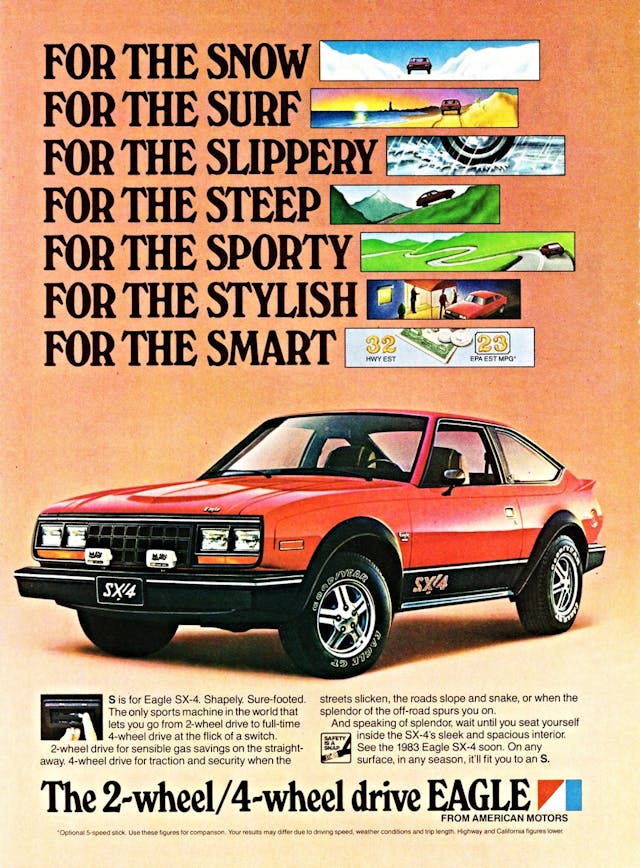
AMC’s board approved Roy Lunn’s proposal, and the Eagle, as planned, was classified by the government as a light truck. Although the prototype was based on a Hornet, the Hornet was revamped into a new model, the Concord, for 1978. As a result, when the Eagle debuted in 1980, it used Concord bodies, with minor changes like fender flares and a different grille. The advanced viscous-coupling drive system was an industry first, and it later made its way into several Jeep products, including the XJ-chassis Cherokee.
Who could blame AMC or Lunn for taking advantage of the loophole? No one could have predicted the crazy consequences these regulations would have on the automotive landscape. Ironically, I think Lunn saw the Eagle as a less wasteful alternative to other trucks and SUVs.
Compared to those, the AMC was smaller, more fuel-efficient, and easier to drive. It was supposed to convince people to trade in their gas-guzzling Wagoneers, not their family sedans.

In light of all this, I still hesitate to call the Eagle a crossover SUV, despite what the government says. The term crossover didn’t even exist at the time, and most AMC marketing cagily refers to the Eagle as a “vehicle,” “automobile,” or “sport machine,” although sometimes the word “car” slips through.
Regardless of semantics, Roy Lunn and American Motors should be commended for the creativity it took to develop and launch such a revolutionary vehicle on such a small budget. More importantly, Lunn should be remembered for engineering an incredible 4WD system that still holds up after 30 years, and there’s no debate about that.
Joe Ligo is the director/producer of the “The Last Independent Automaker,” a documentary TV series about the history of American Motors Corporation.
***
Check out the Hagerty Media homepage so you don’t miss a single story, or better yet, bookmark it. To get our best stories delivered right to your inbox, subscribe to our newsletters.

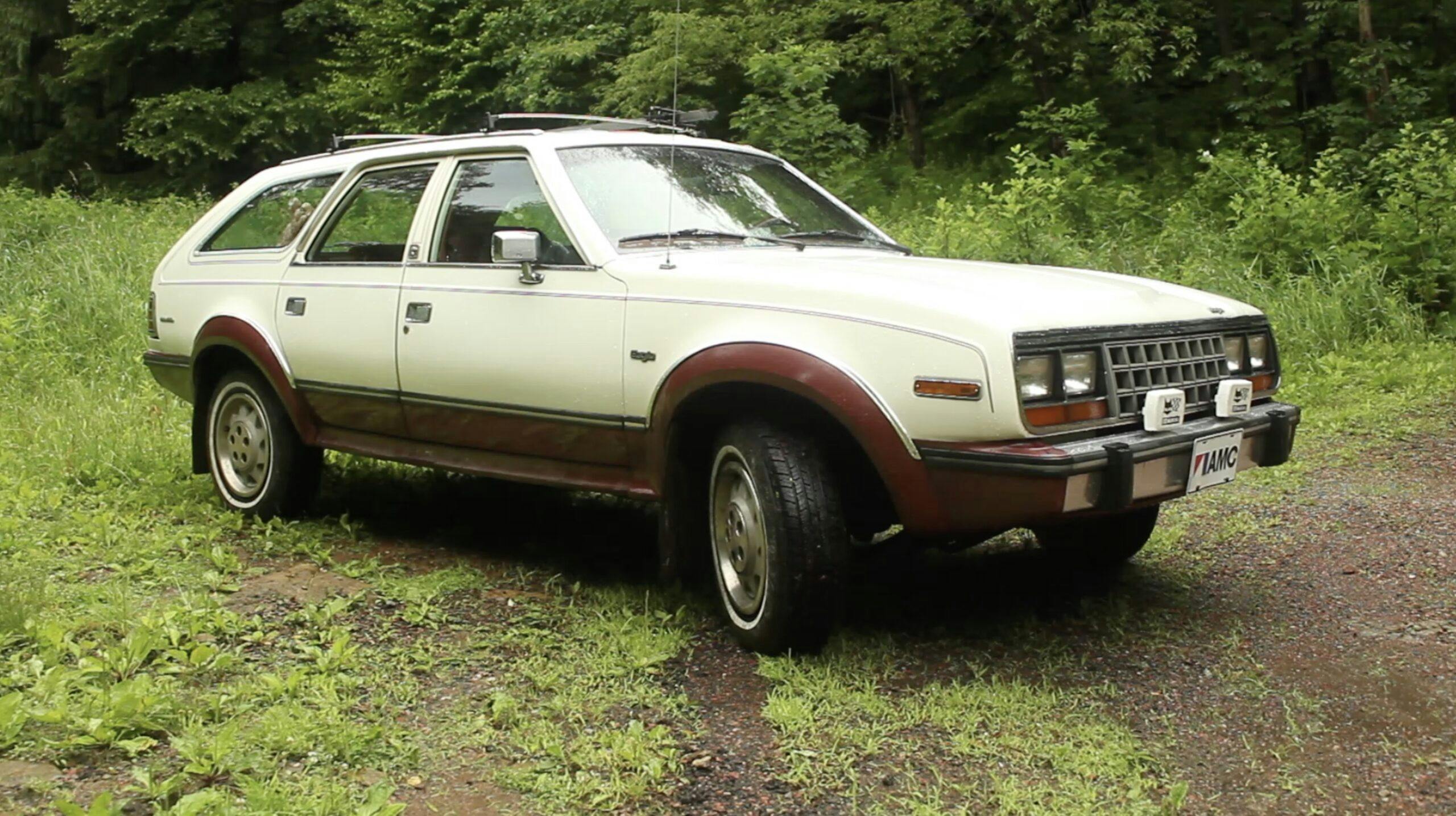
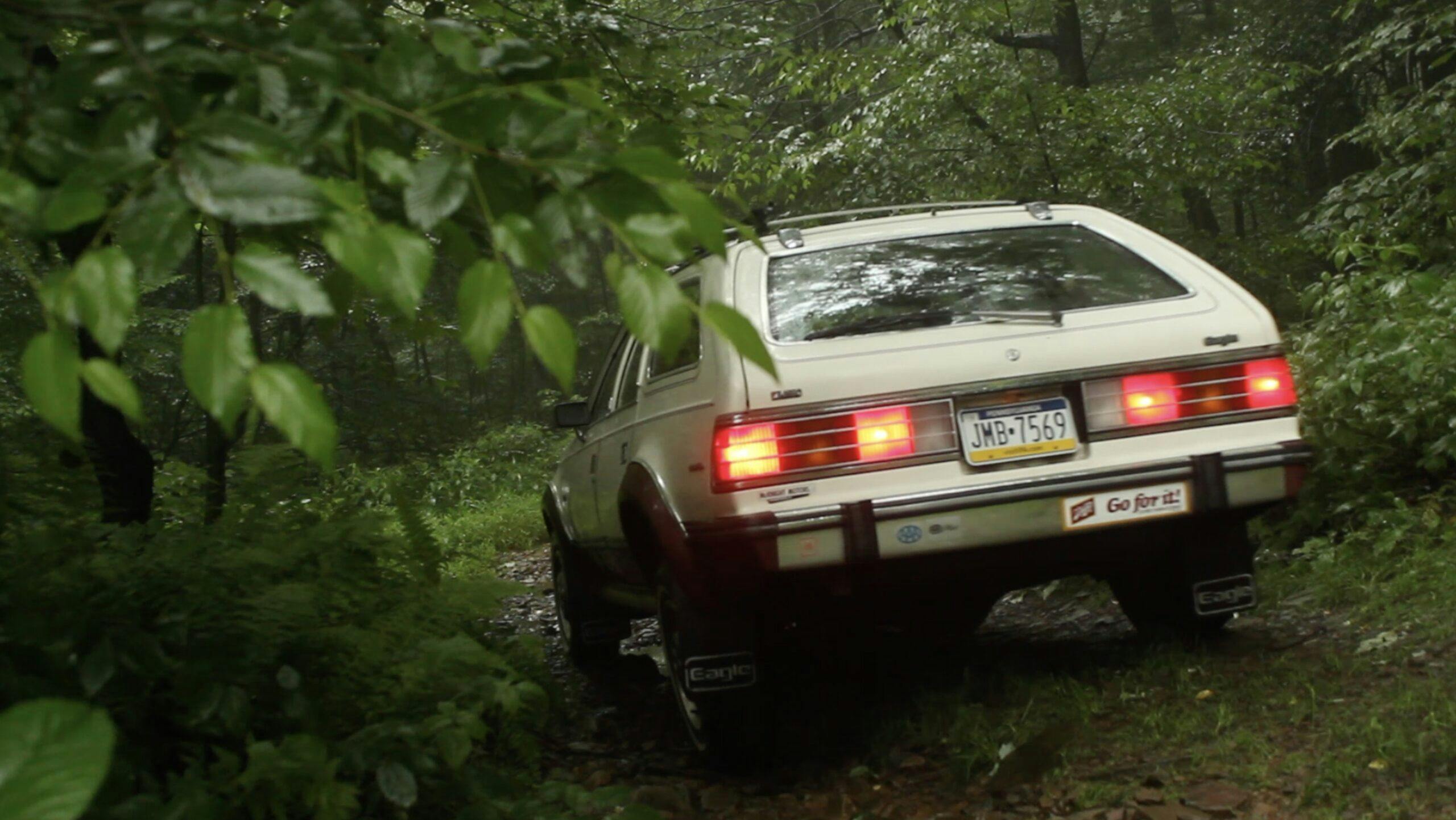

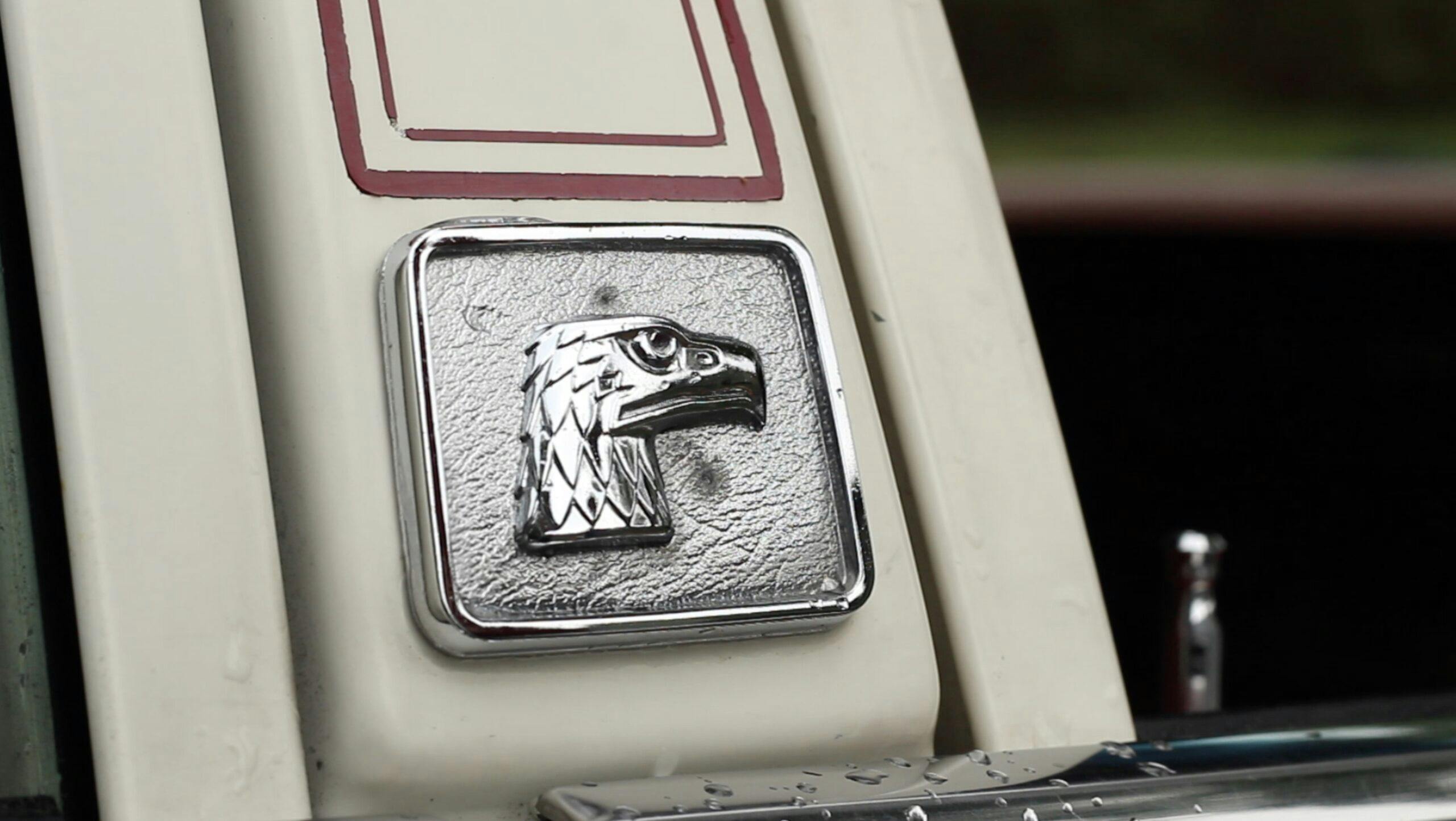
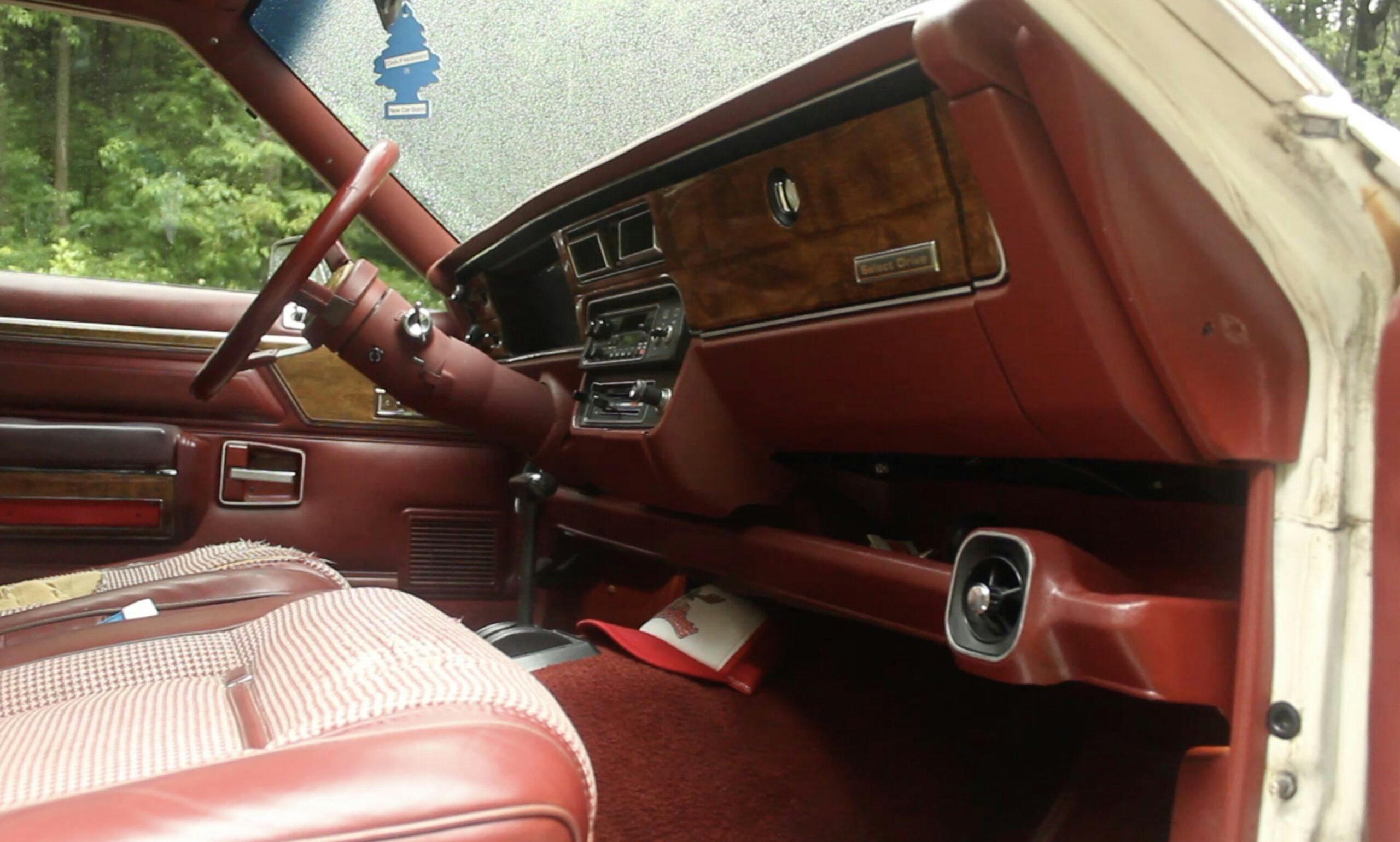

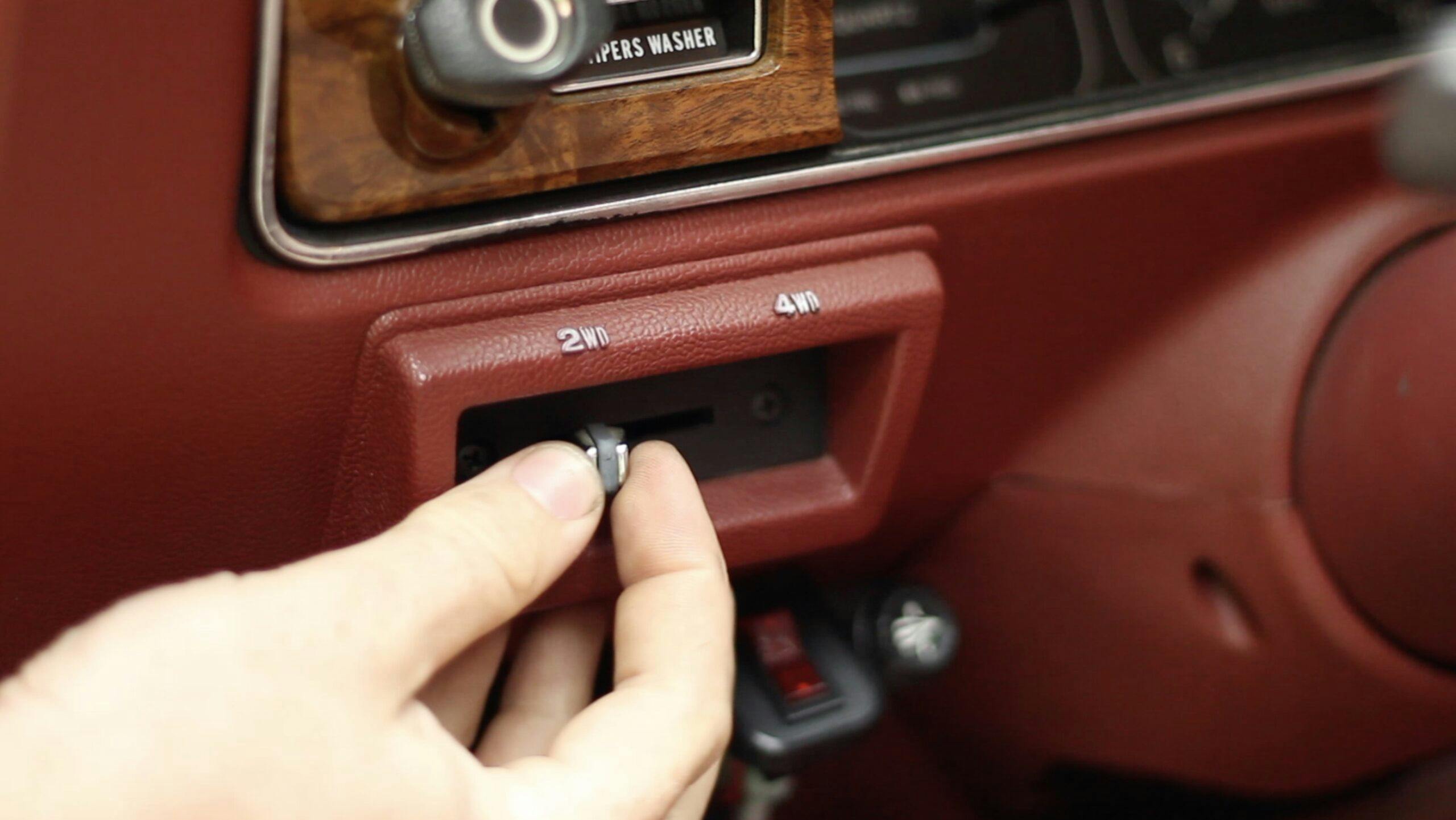


My first cousin spotted the Eagle in 1980, bought it new; drove it until she couldn’t drive anymore last year. Now my second cousin uses the Eagle as their second vehicle. Durable. Cousin had a slippery long driveway in Pennsylvania. Never got stuck in deep snow or ice. She called her car “Trusty”. 🙂
I drove my 1980 Eagle SW for 20 years and close to 300k miles and only got rid of it because it was getting a bit long in the tooth. I went back to my original roots and replaced it with a first Gen Jeep Grand Cherokee, a distant cousin of the Eagle. And speaking of the “original” crossover SUV, let’s not forget that Willys/Jeep introduced four wheel drive versions of their station wagons and Jeepsters way back in the late 40’s.
Best Hagerty article since Baruth left. Joe is really amongst the handful of top automotive journalists left. Great read!
I remember these cars as rather less than appealing in looks, but the idea of all wheel drive in an affordable car sounded great when you live in Chicago suburbs. I did buy the 1991 Eagle Talon TSI AWD when it came out. Best car every. Never had to slow down, even in a blizzard on the IKE. Carried a 31 inch tube tv home with the hatch closed. Tried to find one to relive my youth. Gave up looking so I found a 2016 Jaguar F type R in white like my old Talon. Can’t haul nothing but I hit the gas hard and almost blacked out. So the moral of my story is enjoy them while you have them.
We had an AMC Eagle wagon. It was one tough bad boy. Somebody rear-ended my stopped husband while driving at highway speed. Totaled the lady’s car…maybe a small scratch and push in on our Eagle’s rear bumper. “Um, what was that??”
What about Ford’s 1970-71 Country Squire wagon that was available with four wheel drive?
Oh my, I had a 85 wagon with all the bells and whistles . What a car; the Eagle was great in snow, build quality as well as a lack of problems and the gas economy was really great! A round 119k miles, the engine developed a ticking from the lifters; I brought it in for repairs. I remember the mechanic complaining that he was “wasting his talent on this piece of s***t”. He destroyed the best vehicle I ever owned.
worked at a buick dealership in Seattle in 78, they brought these in because marketing said they were hot sellers. they all sat on the lot no one bought one. after a year or so they all went away. a big flop in Seattle.
How about an article on AMC Eagles with value guide in the Hagerty magazine
My aunt was an architect and uncle was an attorney. They always drove Lincoln’s. Then one day he had an AMC Wagon and she had a cool little AMC with spoiler and ground effects. I never gave it alot of thought but found it interesting. My uncle retired his Eagle wagon to a farm car. Sitting for most of the year until it was needed to haul something wood. It was in 2008 I found myself helping him clear brush on his pond. The AMC had been sitting for some years. One day he sent out to jump start it as we needed it to move some wood then he wanted me to drive it into town for a new battery. I thought it was a complete waste of time but I did as he asked. The old car fired right up. As I was driving down a washed out gravel road for some time I realized it drove excellent and was rattle free. By for the best old car I had ever driven and at that moment, I realized why he had kept it all those years. It was an excellent vehicle for many decades.
Very interesting, the evolution of the drive system. In the 80’s I was a field service rep for Calsonic which was the supplier to Nissan for AC, cooling and exhaust systems and covered dealerships in the 4 NW states. My company car was an Axxess minivan with the full time 4 WD available only on the SE model. It had the viscous limited slip diffs in the rear axle and the transfer case. It was amazing. Never slipped a wheel on the ice with 4 season tires only. It’s the only way 4WD should be built at least for paved road use.
I had one of these “wagons” from the last year of production. Loaded with options, and phenomenal traction. I actually had to stop once to dig the snow out from around the engine, because it was going through snow that deep. But, the de-tuned engine was gutless.
Cool article. I had a roommate in college who owned an Eagle at one point and was always bragging about how great of a vehicle it was.. I was never sold on the looks, but the functionality of AWD vs RWD or FWD is amazing.